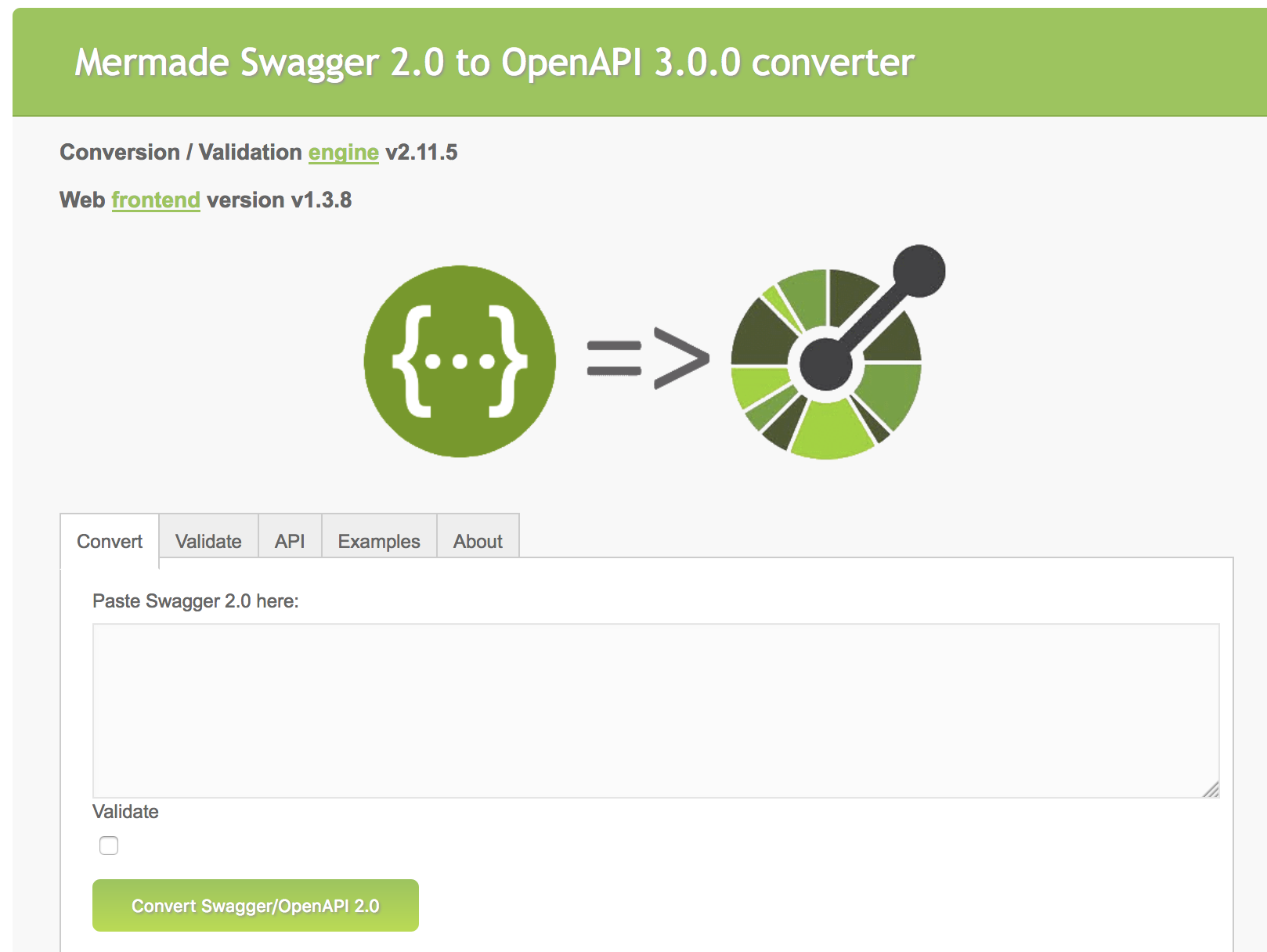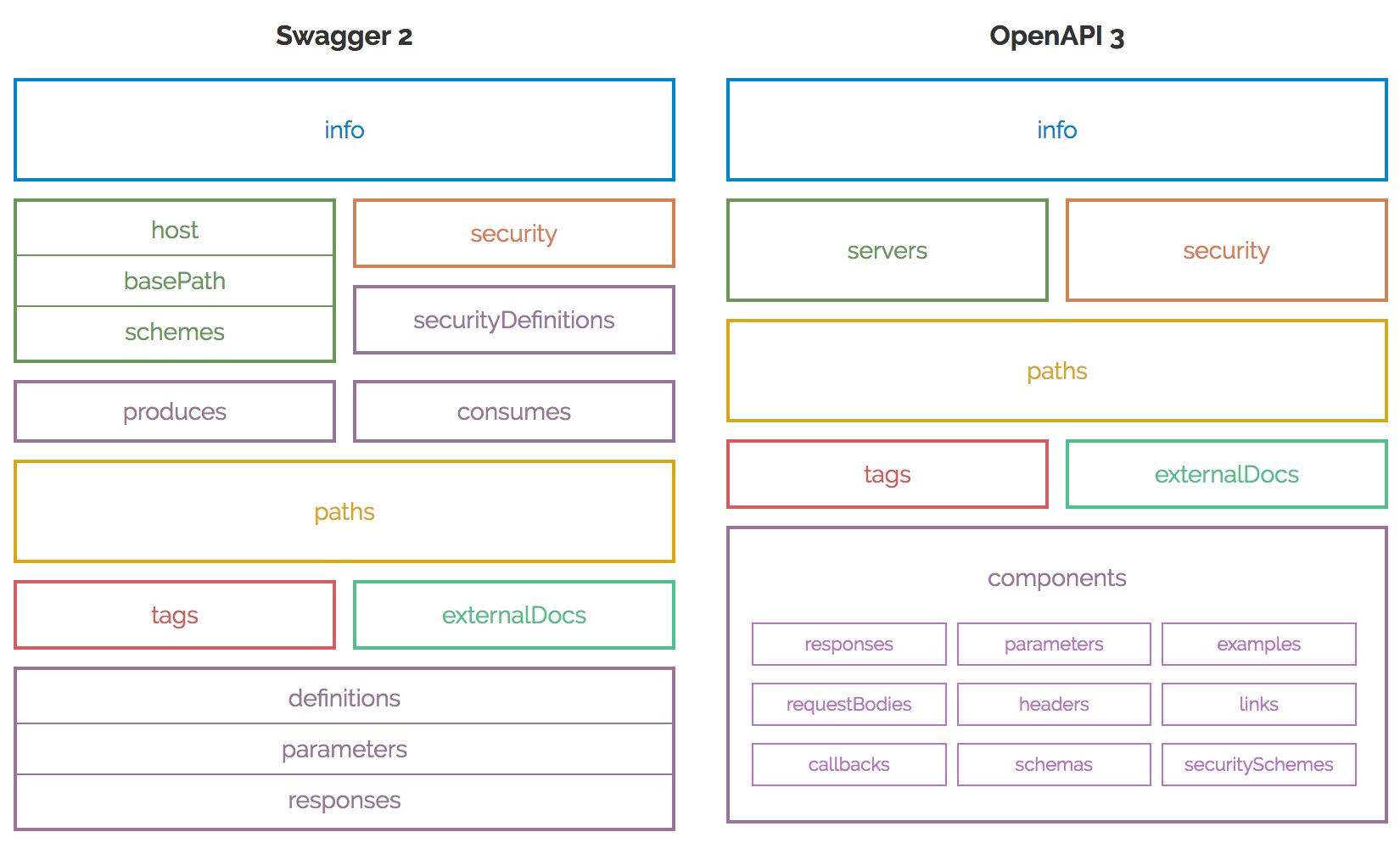OpenAPI: convert your specifications from v2 to v3 with swagger-parser
Swagger Specification was renamed to OpenAPI Specification. I will use OpenAPI Specification or OAS in this blog post.
OpenAPI Specifications are a great way to describes API. Last year a version 3 of the format was published and you might wonder how you can convert OAS2 content into OAS3.
Using swagger-parser version 2.0.0 this operation just requires two lines of code:
- One to read a given URL
<1> - One to write it back to string
<2>
Snippet in a main method:
import io.swagger.parser.OpenAPIParser;
import io.swagger.v3.core.util.Yaml;
import io.swagger.v3.oas.models.OpenAPI;
import io.swagger.v3.parser.core.models.ParseOptions;
public class V2toV3Main {
public static void main(final String[] args) throws Exception {
final String url = "<path-to>/some-specification.yaml";
final OpenAPI oapi = new OpenAPIParser().readLocation(url, null, new ParseOptions()).getOpenAPI(); // <1>
final String string = Yaml.mapper().writerWithDefaultPrettyPrinter().writeValueAsString(oapi); //<2>
System.out.println(string);
}
}
You will just need to have io.swagger.parser.v3:swagger-parser:2.0.0 on your classpath (see also the artifact page on mvnrepository.com).
If you want a JSON output, replace io.swagger.v3.core.util.Yaml with io.swagger.v3.core.util.Json.
If you have already loaded your specification file content into a string, the OpenAPIParser also offer methods to load the content of a String.
Alternative converter
If you do not want to use swagger-parser to perform an OAS2 to OAS3 conversion, have a look at Mermade Swagger 2.0 to OpenAPI 3.0.0 converter.
This tool that can be used directly online.

You paste your OAS2 content into the form and you get an OAS3 specification.
See also
If you are interested by the differences between OAS2 and OAS3, I recommend this blog post:
A Visual Guide to What’s New in Swagger 3.0.
This is were I found this image that summarise the main changes:

Have fun with OpenAPI specifications.